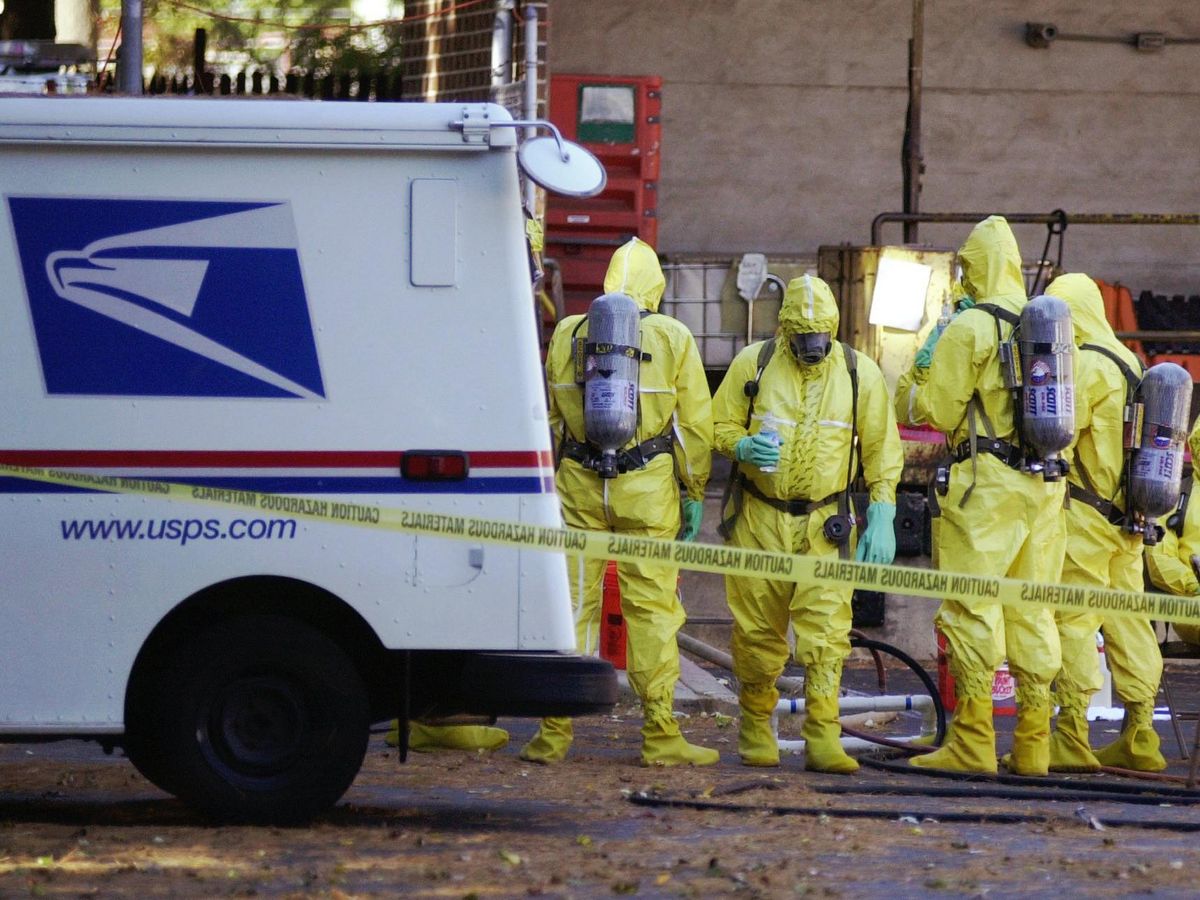This October marks the 20th anniversary of the anthrax terror attacks in the United States. The attacks targeted major media outlets and members of Congress and were delivered through letters containing highly refined anthrax spores. Five people died, 18 others became seriously ill, and dozens more tested positive for anthrax exposure in Florida, New Jersey, New York, and the Washington, D.C., area. The victims included staffers at the targeted destinations and postal workers who handled the mail. Coming on the heels of 9/11, the attacks alarmed Americans as the threat of bioterrorism became real. While the FBI investigated the anthrax attacks, the U.S. Postal Service turned to technology to sanitize the mail and decontaminate their processing facilities.
E-beams and X-rays stopped the spread of anthrax spores
Anthrax is caused by the bacterium Bacillus anthracis, the spores of which can remain inactive for decades until they find a favorable environment to germinate, such as blood or tissue. Infection can occur through inhalation, ingestion, and contact with the skin. Anthrax can be treated with antibiotics, but an inhalation infection is almost always deadly if not identified and treated early.
As it happens, the Armed Forces Radiobiology Research Institute (AFRRI) was already studying how to render anthrax spores harmless through irradiation prior to the mail attacks of 2001. The work grew out of concerns that at least seven countries hostile to the United States were developing anthrax for biological warfare. AFRRI's testing confirmed that two forms of ionizing radiation could be used to sanitize the mail: electron beams and X-rays.
Irradiation had been used for decades to sterilize medical equipment, prepare food for human consumption, and artificially alter the color of gemstones. While both methods kill anthrax, neither was a clear winner when it came to irradiating the mail. With an e-beam, a heated filament generates electrons that accelerate through a vacuum tube. The beam then passes through an electromagnetic lens, which focuses the beam on the target. E-beams could process a high volume of mail efficiently but had limited penetration, so they could be used only on letters and flat envelopes.
X-rays have a deeper penetration, which allows them to treat parcels and boxes, but the X-ray machines of 2001 could process only one-tenth as much mail as the e-beam machines could. Plus, X-rays required safety shielding and monitoring to protect workers.
But the Postal Service needed to process approximately 1.8 million pieces of contaminated mail, and so they quickly contracted with two companies, Ion Beam Applications (IBA) and Titan Corp. (now part of L3Harris Technologies), to irradiate the lot, along with all letters, large envelopes, newsletters, and magazines destined for congressional and government offices in the Washington, D.C., ZIP codes 20200 to 20599.
Scaling up e-beam and X-ray machines to process all that mail proved a huge logistical challenge. IBA had a facility in Bridgeport, N.J., with a Rhodotron, a continuous-wave accelerator capable of generating both e-beams and X-rays. The machine was designed to irradiate polymers with e-beams and frozen hamburgers with X-rays. To irradiate the mail, it functioned in e-beam mode at about 170 kilowatts at 10 megaelectronvolts. Mail was packaged flat, double bagged, boxed, and sealed. Each box was about the size of the trays now used at airport security. The box was irradiated once, manually flipped over, and then irradiated a second time. The facility could handle about 2,040 kilograms of mail per hour.
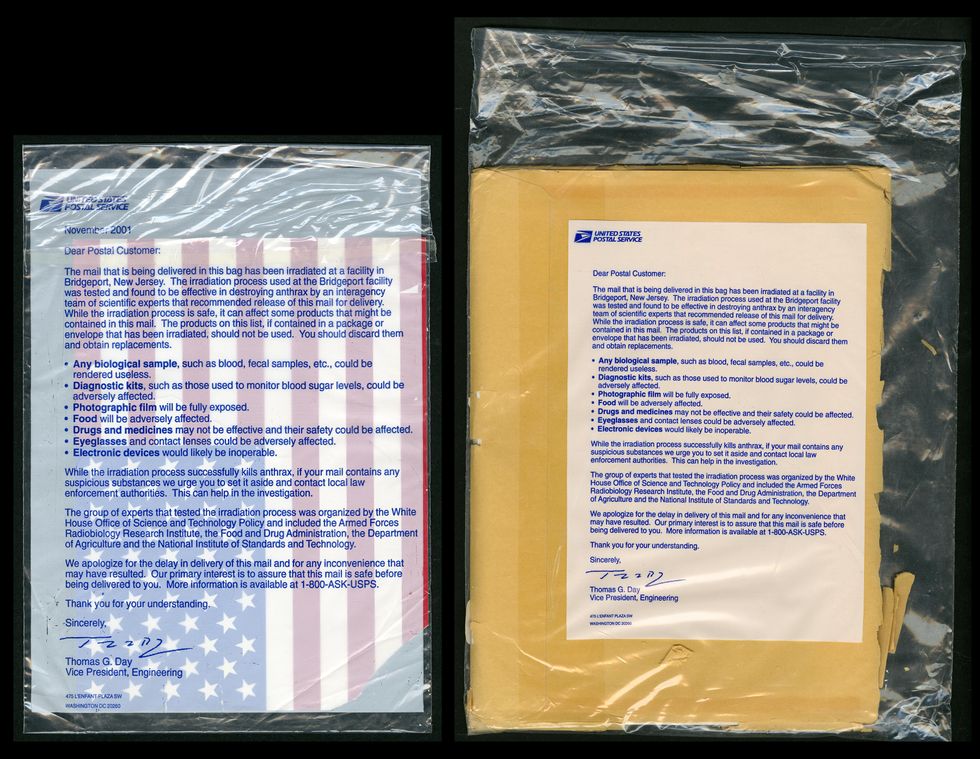
Titan had a facility in Lima, Ohio, with a single accelerator operating at 18 kW at 10 MeV. It was designed to sterilize medical products. Mail arrived packaged vertically in trays. Similar to the IBA's operation, the trays were double bagged, boxed, and sealed. At Titan, each box of mail was irradiated four times, with the conveyor automatically rotating the boxes for each pass. The facility could handle approximately 454 kg of mail per hour.
It took several weeks for the contractors to process the backlog, although it took up to three months for some agencies to receive their waylaid mail. For new mail heading to government offices, the process added approximately five days to delivery times. Initially, neither vendor had suitable X-ray equipment for irradiating large boxes, but eventually they found they could place the boxes in large stainless-steel totes that were suitable for X-raying. Later, the delay times were reduced to two days for letters and three days for packages.
Collectors coveted letters damaged by irradiation
Although irradiation killed the anthrax, one downside was that it made paper brittle and discolored, as evidenced by the letter pictured below, which was sent to the National Postal Museum dated 1 December 2001. Irradiation also warped plastics, exposed film, fogged glass products, weakened the potency of pharmaceuticals, and destroyed biological samples from doctors' offices and scientific labs. Many companies and government offices, including philatelic societies and the Smithsonian Institution, began using alternative shipping services to avoid having their materials irradiated.
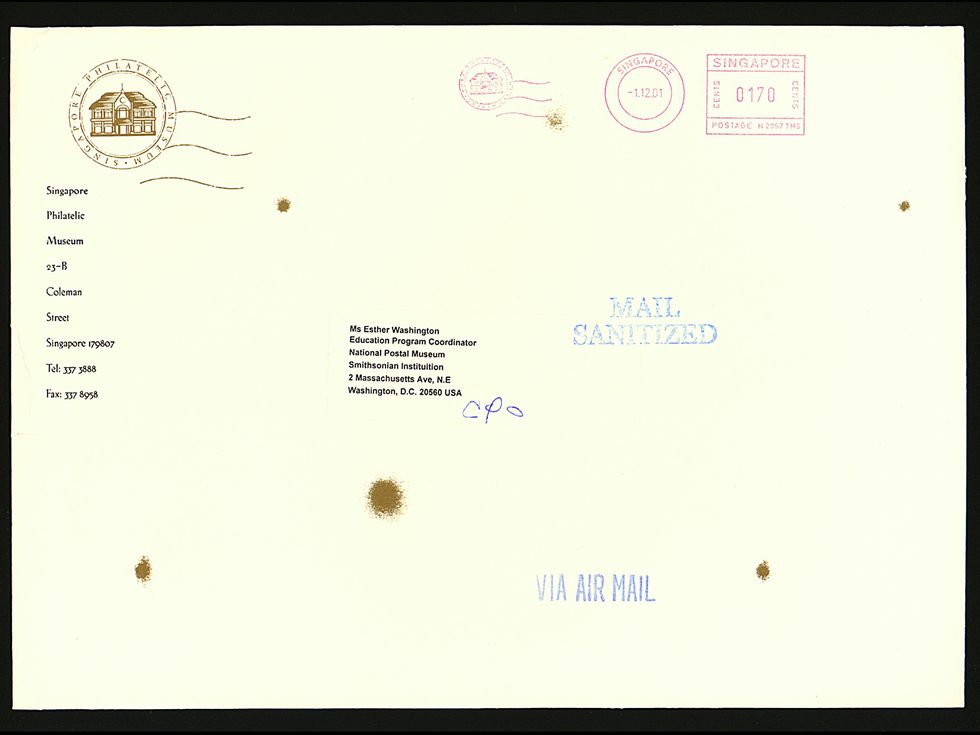
Of course, this process also inadvertently opened up a new path for collectors. Some philatelists began to specialize in collecting irradiated mail, just as some people collect mail from disasters such as the Hindenburg and the Titanic.
Once the backlog of contaminated mail was processed, the U.S. Postal Service had to determine what safety steps to implement permanently. The General Accounting Office, which examines the use of public funds and provides guidance to help Congress make informed decisions, then worked with the USPS, the AFRRI, and industry experts to look for long-term solutions based on cost, effectiveness, efficiency, and safety.
The GAO report, "Diffuse Security Threats: Technologies for Mail Sanitization Exist, but Challenges Remain," published in April 2002, estimated that the cost for irradiating mail nationwide could be up to US $4.2 billion over a 10-year period. That was too big a price tag, but the Postal Service continues to irradiate mail bound for certain government addresses. Additionally, the agency installed biohazard-detection equipment at each of its 272 processing and distribution centers nationwide to identify anthrax in the U.S. mailstream. (In this May 2019 profile of MEMS pioneer Kurt Petersen, he describes how his startup Cepheid's automated polymerase-chain-reaction (PCR) machines were selected to screen the mail for anthrax.)
When "postage stamp tongue" was a new disease
Although the 2001 anthrax attacks were the most high-profile examples of a deliberate attempt to make people sick through the mail, it was not the first time the post was tied to illness. A century earlier, many people still believed in the miasma theory of disease—the idea that sickness was caused by bad smells and poisonous vapors. The Post Office Department attempted to control outbreaks of yellow fever, smallpox, plague, typhus, cholera, diphtheria, measles, leprosy, scarlet fever, tuberculosis, influenza, and mumps by fumigating the mail. Without effective contact tracing, it was easy to suspect that letters or newspapers circulated disease from infected areas to healthy ones.
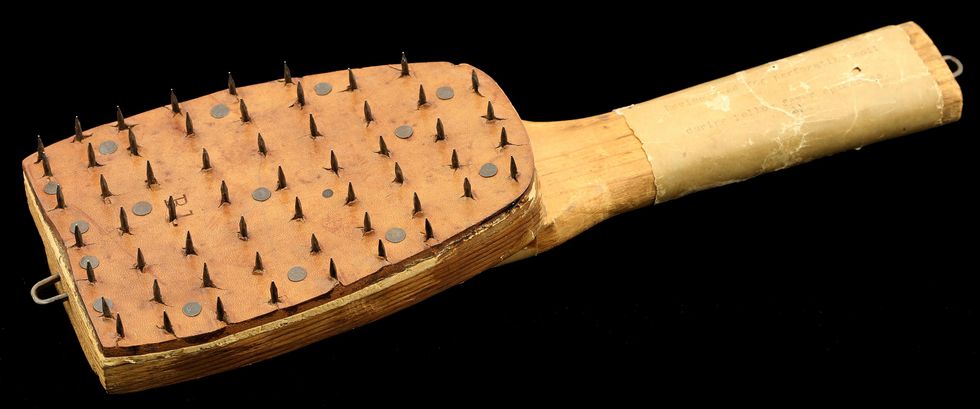
In 1899 the Montgomery, Ala., Board of Health used a wooden paddle with a nail-studded leather face to perforate the mail. Postal workers would then fumigate the letters with sulfur. It may have done little to stop the spread of disease, but the hygiene theater calmed worried customers.
Meanwhile, though, the germ theory was gaining ground, and other postal practices started coming under attack. A Washington Post article from 22 November 1896, for example, questioned the practice of licking a stamp to activate its glue. It warned that "Postage Stamp Tongue was a new disease" and suggested that stamps were threatening the nation's public health as a harbor for virulent germs.
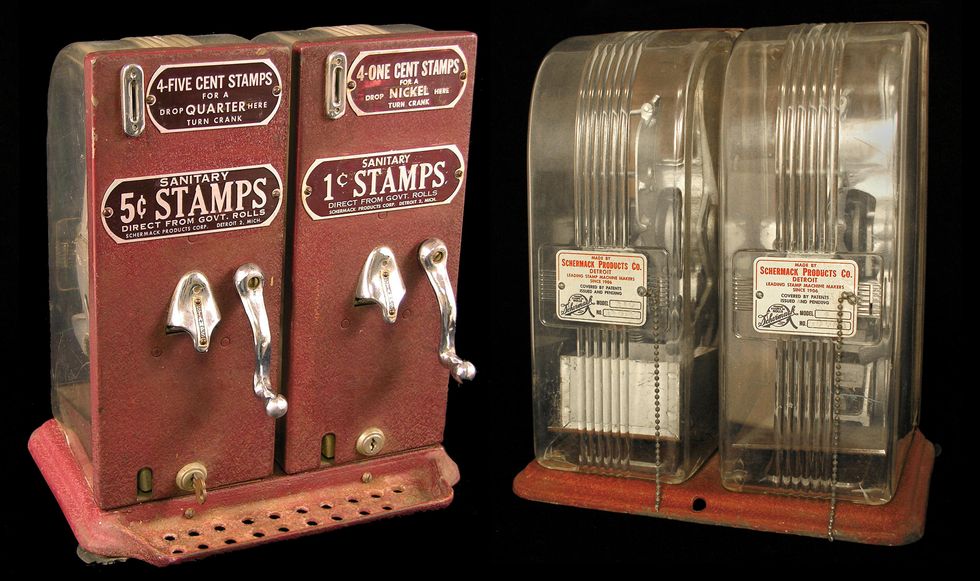
Joseph Schermack, who is generally credited with producing the first practical stamp-vending machine, formed the Sanitary Postage Service Corp. in 1926. His machines dispensed stamps in sanitary folders to a clientele that feared germs. This fear largely receded as the public became more informed about disease transmission and self-sticking stamps became common, leaving the sanitary stamp packaging as a curious reminder of society's evolving relationship with illness and risk.
Fears of biological contamination through the mail resurfaced last year in the early months of the global pandemic, when scientists were unsure of how COVID-19 spread. Should we wipe down letters and packages? Should we wear gloves to handle the mail? Should we let everything sit for 24 hours before opening? The Centers for Disease Control and Prevention published guidelines for mail and parcel delivery drivers, which the USPS followed. After new science showed little likelihood from contracting COVID from the mail, the CDC archived its guidelines. Opening the mail today remains a low-risk activity.
Part of a continuing series looking at photographs of historical artifacts that embrace the boundless potential of technology.
An abridged version of this article appears in the October 2021 print issue as "Anthrax by Mail."
- Irradiation Nation - IEEE Spectrum ›
- Biological Warfare Canaries - IEEE Spectrum ›
- AI Makes Anthrax Bioterror Detection Easier - IEEE Spectrum ›
- Nine Cautionary Tales - IEEE Spectrum ›
Allison Marsh is a professor in Women and Gender Studies at the University of South Carolina and codirector of the university’s Ann Johnson Institute for Science, Technology & Society. She combines her interests in engineering, history, and museum objects to write the Past Forward column, which tells the story of technology through historical artifacts. Marsh is currently working on a book on the history of women in electrical engineering.
